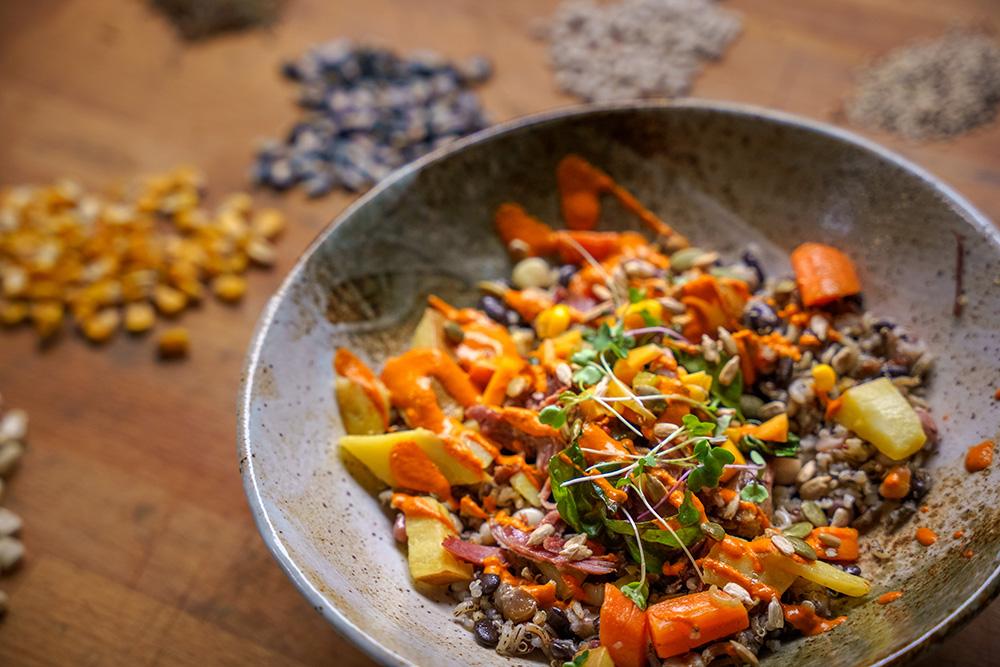A new book exploring Indigenous cuisine through the lenses of archaeology, culture, and ecology offers fresh insights into the deep-rooted food traditions of Indigenous communities. By combining scientific research with cultural knowledge, the work sheds light on how Indigenous peoples have sustainably interacted with their environments for centuries. The publication aims to deepen understanding of Indigenous culinary heritage while highlighting its relevance in contemporary conversations about food sovereignty and environmental stewardship.
Exploring Ancient Indigenous Recipes Through Archaeological Discoveries
Archaeological findings have opened a new window into the culinary traditions of Indigenous communities, revealing a rich tapestry of flavors and techniques that have been preserved for centuries. Through excavations of ancient pottery, charred plant remains, and stone tools, researchers have pieced together how Indigenous peoples utilized native plants and animals to create sustainable, nutrient-rich diets. These discoveries challenge previous assumptions, highlighting the sophistication and ecological knowledge embedded in Indigenous cooking practices long before modern influences.
Key elements uncovered by archaeologists include:
- Preservation methods: Evidence of drying, smoking, and fermenting techniques that extended the shelf life of wild-caught fish and game.
- Plant domestication: Early cultivation of tubers, berries, and medicinal herbs identified through pollen analysis.
- Seasonal harvesting: Strategic timing in gathering foods to ensure year-round availability and nutritional balance.
| Ingredient | Archaeological Evidence | Culinary Use |
|---|---|---|
| Wild rice | Charred grains found in storage pits | Boiled, mixed with other grains or seeds |
| Maple sap | Residue in pottery suggesting syrup production | Sweetener for beverages and porridges |
| Smoked fish | Smoke-dried fish bones in hearth sites | Preserved protein source for winter months |
Connecting Cultural Traditions With Ecological Insights
Indigenous culinary practices reveal a profound relationship between people and the land, intertwining cultural heritage with ecological knowledge. Through archaeological evidence and oral histories, the new book highlights how traditional foodways serve as a sustainable model, reflecting centuries of adaptation to local environments. This approach not only preserves ancestral recipes but also promotes stewardship of natural resources, emphasizing the harmonious balance Indigenous communities maintain with their ecosystems.
Key insights from the research illustrate how specific ingredients were carefully selected and harvested, based on seasonal cycles and ecological availability. The work showcases:
- Seasonal harvesting patterns that reduce environmental impact and ensure food security.
- Intergenerational knowledge transfer as a mechanism for cultural continuity and ecosystem management.
- Use of native plants and animals adapted through centuries to thrive in local conditions.
| Traditional Food | Ecological Role | Cultural Significance |
|---|---|---|
| Wild berries | Pollinator support, soil enrichment | Seasonal ceremonies |
| Salmon | Maintains aquatic food chains | Harvesting rituals |
| Corn | Soil nitrogen fixation | Staple in festivals |
Experts Recommend Preserving Indigenous Foodways for Future Generations
Specialists in Indigenous culinary traditions emphasize that safeguarding these foodways is crucial for maintaining cultural identity and ecological balance. They argue that the knowledge embedded in Indigenous cuisine offers more than just nutrition-it encompasses a holistic understanding of the land, seasonal cycles, and sustainable harvesting techniques. Many Indigenous communities continue to practice these traditions, which serve as living repositories of historical knowledge and resilience. As one expert noted, “Every meal tells a story of survival and symbiosis with nature.”
To support the preservation efforts, experts suggest community-driven initiatives that include:
- Intergenerational knowledge transfer through storytelling and hands-on food preparation
- Collaborations with archaeologists and ecologists to document traditional methods and ingredients
- Educational programs integrating Indigenous food systems into local and national curricula
- Promotion of native crops and sustainable harvesting in contemporary food markets
| Key Benefit | Description |
|---|---|
| Cultural Identity | Maintains a strong connection to heritage and rituals. |
| Ecological Sustainability | Supports biodiversity and responsible resource use. |
| Health & Nutrition | Promotes natural, locally sourced, nutrient-rich diets. |
| Economic Empowerment | Encourages community-based food enterprises and tourism. |
The Way Forward
As this new book demonstrates, exploring Indigenous cuisine through the lenses of archaeology, culture, and ecology offers more than just a culinary history-it provides a deeper understanding of the enduring relationships between Indigenous peoples and their environments. By blending scientific insight with cultural narratives, the work invites readers to appreciate the rich heritage and resilience embedded in Indigenous food traditions. For communities and curious readers alike, this exploration marks an important step toward recognizing and honoring Indigenous contributions to Canada’s diverse culinary landscape.
